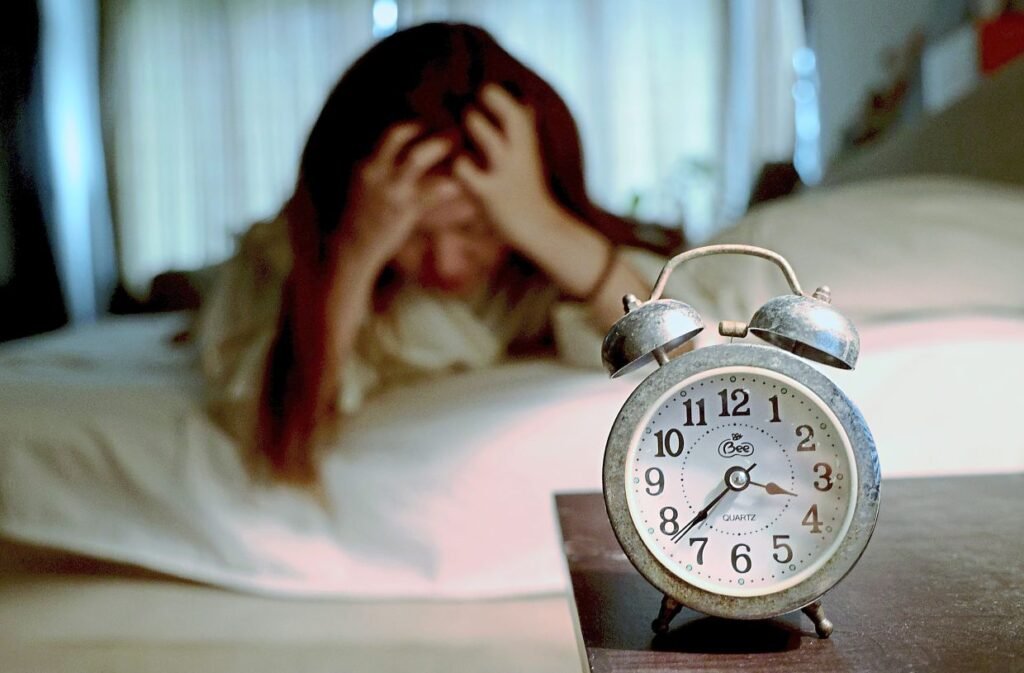Insomnia is a prevalent sleep disorder that affects millions worldwide. Characterized by difficulty falling asleep, staying asleep, or waking too early, insomnia leads to daytime fatigue and cognitive impairments. To tackle this issue effectively, it’s crucial to understand the science behind insomnia, its causes, and strategies for achieving restful nights.
Understanding the Sleep Cycle
To comprehend insomnia, it’s essential to understand the sleep cycle. Sleep consists of two main types: Rapid Eye Movement (REM) and Non-Rapid Eye Movement (NREM) sleep. A typical sleep cycle lasts about 90 minutes and includes:
NREM Stage 1: The lightest stage, where the body transitions from wakefulness to sleep, lasting only a few minutes.
NREM Stage 2: A deeper sleep where heart rate slows, and body temperature decreases.
NREM Stage 3: The deepest stage, vital for physical restoration and recovery.
REM Sleep: This phase occurs after NREM and is crucial for memory consolidation and emotional regulation, where most dreaming happens.
Disruptions in this cycle can lead to insomnia, highlighting the importance of recognizing its underlying causes.
Common Causes of Insomnia
Insomnia can stem from a variety of factors, broadly categorized into psychological, physiological, and environmental causes.
Psychological Factors
Stress and Anxiety: Elevated stress can lead to racing thoughts and an inability to relax, making it difficult to fall asleep. Anxiety disorders can worsen this, creating a cycle of sleeplessness and increased anxiety about not sleeping.
Depression: Changes in sleep patterns are common in individuals with depression. While some may experience insomnia, others may struggle with excessive sleeping (hypersomnia), though insomnia is more frequently reported.
Physiological Factors
Chronic Pain: Conditions such as arthritis or fibromyalgia can disrupt sleep by making it uncomfortable to find a restful position.
Medical Conditions: Hormonal changes (like those during menopause), respiratory issues (such as asthma), and gastrointestinal disorders (like acid reflux) can contribute to insomnia.
Environmental Factors
Noise and Light: An environment that is too noisy or brightly lit can hinder sleep. Sleep hygiene emphasizes creating a calm and dark environment to promote better sleep.
Irregular Sleep Schedules: Shift work, frequent travel across time zones, and inconsistent bedtime routines can confuse the body’s internal clock (circadian rhythm), making it difficult to fall asleep and wake at desired times.
The Role of Lifestyle Choices
Lifestyle decisions significantly impact sleep quality. Factors such as diet, exercise, and screen time before bed can either hinder or support restful nights.
Diet: Heavy meals, caffeine, or alcohol consumed close to bedtime can disrupt sleep. While alcohol may induce drowsiness initially, it often leads to fragmented sleep later.
Exercise: Regular physical activity is beneficial for sleep by reducing anxiety and depression, but exercising too close to bedtime may energize rather than relax.
Screen Time: The blue light emitted by screens interferes with melatonin production, the hormone regulating sleep. Limiting screen time in the hour before bed can improve sleep onset.
Cognitive Behavioral Therapy for Insomnia (CBT-I)
Cognitive Behavioral Therapy for Insomnia (CBT-I) is an effective treatment that addresses the underlying thoughts and behaviors contributing to insomnia. Unlike medication, which offers temporary relief, CBT-I provides long-lasting solutions by fostering healthier sleep habits.
Key Components of CBT-I
Sleep Restriction: This method limits time spent in bed to the actual amount of time spent sleeping, gradually increasing it as sleep efficiency improves.
Cognitive Restructuring: This aspect tackles negative thoughts about sleep, helping individuals challenge and modify unhelpful beliefs.
Stimulus Control: This strategy encourages associating the bed with sleep only, discouraging activities like reading or watching TV in bed.
Sleep Hygiene: Practical Strategies for Better Sleep
In addition to therapeutic approaches, practicing good sleep hygiene can significantly enhance sleep quality. Here are some practical strategies:
Establish a Routine: Go to bed and wake up at the same time each day to regulate the body’s internal clock.
Create a Relaxing Pre-Sleep Ritual: Engage in calming activities, such as reading or taking a warm bath, to signal that it’s time to wind down.
Optimize Your Sleep Environment: Ensure your bedroom is conducive to sleep—cool, dark, and quiet. Use blackout curtains, earplugs, or white noise machines if needed.
Limit Naps: While short naps can be beneficial, long or irregular napping can negatively affect nighttime sleep.
When to Seek Professional Help
If insomnia persists despite lifestyle changes and good sleep hygiene practices, it may be time to consult a healthcare professional. They can help identify underlying medical or psychological issues and recommend appropriate treatments, which may include medication or therapy.
Conclusion
Insomnia is a complex condition influenced by psychological, physiological, and environmental factors. Understanding the science behind insomnia and implementing strategies like cognitive behavioral therapy and good sleep hygiene can significantly improve sleep quality. By addressing the root causes of insomnia, individuals can reclaim restful nights and enhance their overall well-being. Sleep is a fundamental aspect of health that deserves attention and care—making it a priority can lead to a healthier, more balanced life.
